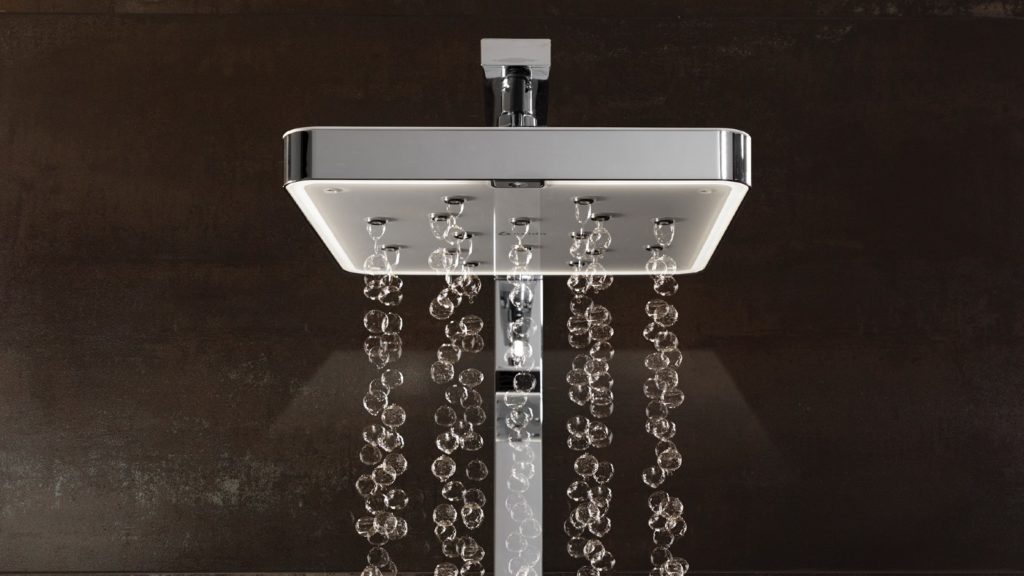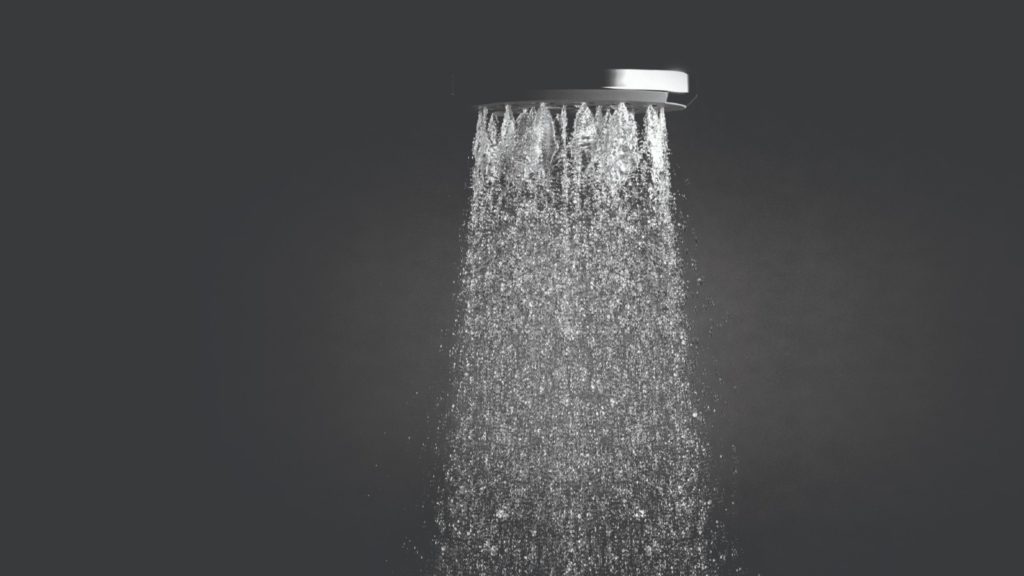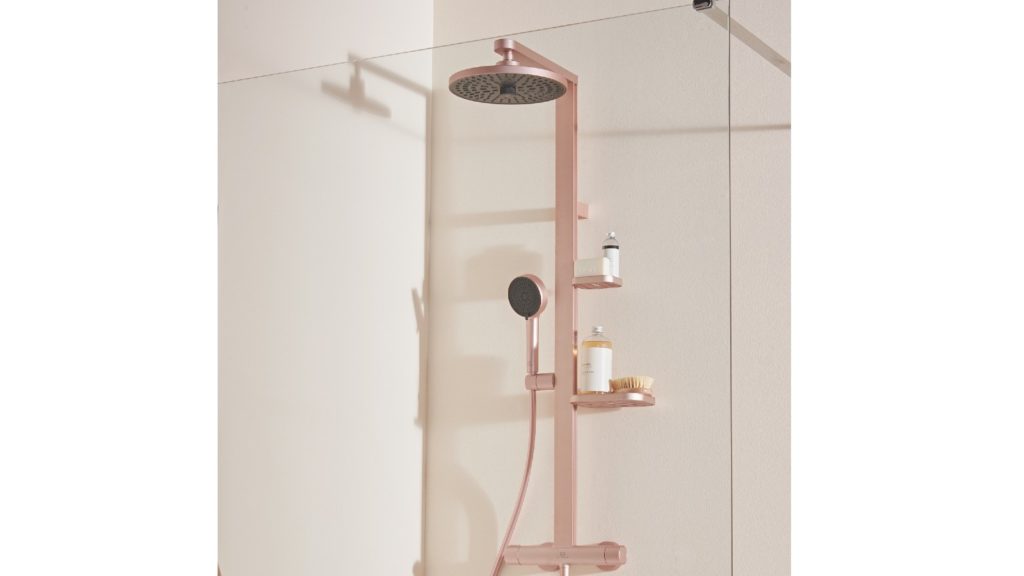Sustainable showering | Every last drop
Sustainability is becoming a focus for shower choice and designers need to embrace and share water-efficient technologies with their customers
Sustainability is becoming a focus for showering and designers need to embrace and share water-efficient technologies with their customers

The award-winning Bubblespa from Kelda Showers combines air and water to create droplets, reducing water, energy and carbon emissions by up to 50%.
With showers widely acknowledged as the biggest consumer of hot water in the home, and a drive by Government to reduce water use and CO2 emissions, it’s no surprise sustainability is a focus of showering.
Head of marketing and Innovation at Methven UK Chris Billingham explains: “Historically, we have not had great water pressure in the UK and there is now a level of overcompensation for that.
Sponsored Video
“Increased flow rates and high-pressure systems across she UK are optimised to use significant amounts of water.
“This now means we need to take steps and put measures in place to curb excessive us and preserve what is ultimately a finite resource.”
The recent Plan for Water by the Department of Environment, Food and Rural Affairs (Defra), stated Government would work with industry to set minimum water efficiency standards, as a statement read: “Power showers average around 12 to 15 litres of water a minute, with many using much more than this. The average amount of time spent in the shower is eight to 12 minutes, so if you had a flow rate of 15 litres per minute for a 10 minute shower you would be using 150 litres of water.
“That is more than a bath, which uses an average of 80 litres. A family of four could save as much as £270 a year on their water and energy bill by installing a more efficient shower head.”
Eco-conscious consumer
Interestingly, the swing towards sustainability has also been mirrored by consumers becoming more eco-conscious in their life choices.

Methven Aurajet Aio is available as a overhead drencher, handset and shower kits, with selected models in a choice of chrome and matt black finishes
According to a UK Shower Market Survey, conducted by Grohe in 2020, over half of consumers wanted a shower that could assist them in being sustainable in their day-to-day-life (54%) and nearly two thirds of respondents valued the importance of whether a shower has been sustainably produced.
Perhaps spurred by the cost-of-living crisis, saving water, energy and therefore money offers great appeal in shower choice.
In fact, such is the consumer interest, Kelda Showers was recently presented an Ideal Home Bathroom Award 2023 for its Bubble Spa shower head.
Using air and a fan to create large water droplets, can reduce water flow, energy and emissions by as much as 50%, while creating a spa-like environment.
Performance and price
And that has been one of the biggest concerns around water efficiency, that there shouldn’t be a payoff in performance. Nor would consumers be prepared to pay a price differential just to be environmentally friendly.

Hansgrohe Pulsify Planet Edition handshower uses 6 litres of water, is made from recyclates, where possible, and is chrome-free
Chris Billingham of Methven UK replies: “All our showers operate at 8 litres per minute or less. However, we offer a range of products that meet different price points. This means customers can still enjoy showering at a lower flow rate without compromised performance, while meeting their set budget.”
Director of sales at Neoperl UK Chris Neath says it’s a matter of education along the supply chain: “The technology is available now to reduce the flow of water very easily and yet for a comfortable shower to be possible, especially since the developments of an aerated flow.
“There is an is an education required to the retailer and consumer and habit changes for the fitter to audit the flow on installation and adjust/reduce the flow accordingly.
“The question then becomes how do we incentive the installer to do this?”
Senior product manager at Ideal Standard Stacey Seagrave explains how the company supports its showrooms, commenting: “At Ideal Standard, we’ve a dedicated team that supports our retail network and are on hand to provide partners with everything they need to deliver the best service to customers.
“This includes bringing staff up to speed on new technology, and the sustainability credentials of the products, so they can provide the correct information and advice to end-users.
“Our showroom designers also work with individual retailers to curate display areas and highlight solutions and their benefits – from stunning designs to innovative green technology.”
Recycling and recovery
Showering technology spans flow restrictors and air injection systems, which have been around for some time through to the recent developments of heat recovery wastes and water recycling showers.

The Kaldewei FlowLine Heatrecovery shower channel uses heat from the shower water to preheat the cold water on its way to the shower fitting
Kaldewei, which uses BlueMint steel for its enamelled shower trays reducing carbon emissions by 70%, introduced the FlowLine Heatrecovery shower channel at ISH 2023.
Head of sales at Kaldewei UK Adam Teal comments: “A massive quantity of hot water is wasted as it flows unused down the drain. The new Kaldewei FlowLine Heatrecovery shower channel uses heat from the shower water to preheat the cold, fresh water on its way to the shower fitting.
“A heat exchanger integrated into the waste ensures efficient heat recovery so significantly less hot water needs to be added to guarantee a pleasantly warm shower temperature.”
While Spring 2024 will see the market launch of the Grohe Everstream water – the company’s first recycling shower.
It is currently being field tested with a training programme for installers expected to start in the second half of 2023.
In addition, the bathroom manufacturer is also aiming to have all its Grohe concealed showers water-recycling-ready by 2030.
Ronke Ugbaja at Grohe UK & Lixil EMENA reports: “The Everstream system uses as little as a quarter of the water and a third of the energy typically required by traditional showers.”
Shower life cycle
While water consumption and consumer behaviours are at the spearhead of showering, designers and specifiers considering the holistic credentials of a product are met by manufacturers who have considered production, packaging and shipping.

The Grohe Everstream water is the company’s first recycling shower and reportedly uses as little as a quarter of the water and a third of the energy typically required by traditional showers
Hansgrohe’s Pulsify Planet Edition handshower, which uses 6 litres of water, is made from recyclates where possible and is chrome-free.
While Ideal Standard has also introduced Alu+ showers made from recyclable aluminium that is made up of 84% recycled content.
Stacey Seagrave of Ideal Standard continues: “The range is completely free from chrome, lead and nickel, and also features all of the water-saving technology people expect, such as flow limiters that restrict consumption to just 8 litres per minute for the hand spray and 12 litres per minute for the rain shower.”
In addition, for ease of identification, selected showers come complete with Environmental Product Declarations and Ideal Standard has introduced the EcoLogic label – focusing on energy and water efficiency, hygiene, sustainable materials and sustainable value chain.
Legislation driven
Certainly, sustainability is only going to grow in significance in bathroom design and, in particular, the showering space, especially if legislation gains ground.

Alu+ is a range of showers, from Ideal Standard, made of recyclable aluminium and which is made up of 84% recycled content in a choice of Silk Black, Rose and Silver
Ultimately it may see all shower set-ups becoming sustainable across the board.
Stacey Seagrave of Ideal Standard concludes: “A mix of consumer-driven demand, regulations, legislation and manufacturer progress will be the key broad strands for shower set-ups to become more sustainable across the board.
“The legislation will be the true force behind these changes, though, making manufacturers adapt, and helping consumers to achieve more sustainable showering set-ups.”
Related Articles
#socialwall
Sintered stone manufacturer Neolith has launched Calacatta Roma and Cappadocia Sunset, inspired by nature and classical architecture, and for use in kitchens or bathrooms walls, floors, in gardens or facades.

They belong to The New Classtone and Fusioncollections which interpret marble and natural stone, respectively, and boast Neolith’s antibacterial NeolEAT technology.
Inspired by Ancient Rome, Calacatta Roma (pictured top) pays homage to Italian Carrara marble, with ochre and grey veins in a white background.
While the Cappadocia region, in central Turkey, with its rock formations formed by volcanoes and underground cities, has inspired Cappadocia Sunset (pictured below).

Just like all of Neolith’s surfaces, Calacatta Roma and Cappadocia Sunset are resistant to heat and atmospheric conditions, are 100% recyclable, and do not contain added quartz to their formulation.
Mar 14, 2024
JUST OUT: @AcquabellaBath has unveiled a choice of shower grate patterns for its Base and Arq shower trays… https://t.co/kMN83c40Qf
JUST OUT: @FrankeUK unveils Mythos single lever mixers in Swivel Spout and Pull-out Nozzle options. #kitchendesign https://t.co/TSKCAo5r0e
INTERVIEW: Sales and marketing director of @blumuk David Sanders on how the kitchen industry has changed post-pand… https://t.co/k9LIpUhhDF
NEWS: Challenging housing market is driving home improvements, finds new research by @HafeleUK #HomeImprovement… https://t.co/eMB7jludIm
NEWS: British manufacturer @kudosshowersltd acquired by European SanSwiss. #acquisition #manufacturers #bathrooms https://t.co/gpOv7jMevn
NEWS: @HafeleUK announces Richard Curtis as managing director. #newhire #appointment #leadership https://t.co/NP8U5ramOb
NEWS: @officialbikbbi names CT1 sealant manufacturer as corporate sponsor. #installation #installer https://t.co/8zsxs2HI3n
NEWS: @quookeruk named one of fastest-growing companies in North West. #business #Awards https://t.co/9zZ1ZDGrFI
RETAILER FOCUS: Managing director and design director of UK Kitchen Retailer of the Year @KitchensbyJSG Jim Geddes… https://t.co/JhL3vmxwbd
NEWS: Consumers are renovating for long term, with kitchens and bathrooms a priority, finds @HouzzUK… https://t.co/9VhoTUDI0B
PROFILE: Managing Director of Flair Showers Alan Wright talks about the relaunch of the company, creation of a Show… https://t.co/WDMPqDt2Uk
The new @blumuk carbon black LEGRABOX boasts beautifully slim drawer sides, bringing furniture onto trend, easily b… https://t.co/DrEXXWTyQb
NEWS: House of Fraser owner @FrasersGroupPLC enters strategic partnership with @ao, buying a stake in the online e… https://t.co/44N0O9bekn
NEWS: @HowdensJoinery awarded @WhichUK Best Buy for its rigid cabinets and handleless kitchens. #kitchen… https://t.co/rALz8XRHbv
NEWS: @grohe invites 800 guests from around the world to its Grohe X Professional event in Lisbon, Portugal.… https://t.co/2RGjDum980
JUST OUT: Home appliance brand Candy has unveiled the Rapido dishwasher, claimed to be the fastest and most spaciou… https://t.co/mbWn2pJp2C
Newsletter
Sign up to receive our newsletter and we’ll send you details of our latest videos, competitions and much more

